OPINION
The real reasons why US senators backed India in its border dispute with China
Published
1 year agoon
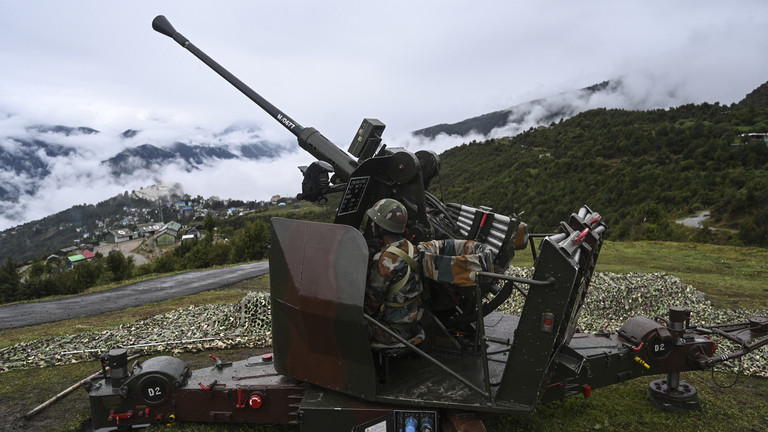
A bipartisan Senate resolution wades into the Sino-Indian conflict to further drive a wedge between two Asian giants
Washington is inserting itself into the ongoing Sino-Indian border conflict in an effort to both win political points with India while further skewering China. The recent bi-partisan Senate Resolution introduced in the upper chamber reaffirms US recognition of the Arunachal Pradesh border state as India’s sovereign territory.
The proposed resolution – co-sponsored by Senators John Cornyn (R-Texas), Bill Haggerty (R-Tennessee) and Jeff Merkley (D-Oregon) – is another attack on China, which the annual US threat perception report recently identified as Washington’s main adversary in the post-Cold War era. The title of the resolution – “Reaffirming the state of Arunachal Pradesh as Indian territory and condemning the People’s Republic of China’s provocations in South Asia” – sums up the gist of the legislative bid that clearly states the US side in the matter. It upholds India’s sovereign rights over Arunachal, the largest and least populous state in the north-east, which China claims to be an extension of southern Tibet, or “Zangnan” in Mandarin.
Arunachal Pradesh, formed from British India’s North-East Frontier Agency (NEFA), became a federally-governed union territory in 1972 and a full-fledged state in 1987. China had taken exception to the statehood status.
India is currently making a massive infrastructure push in Arunachal, stemming from its intent to counter China’s aggressive ways. The humiliating 1962 defeat in the Sino-Indian war spurred New Delhi’s bid to integrate the backward tribal-majority state, and Indian defense experts maintain that the infrastructure push to the key border state is aimed at cocking a snook at China’s claim over Arunachal.
US threat perception report: Russia and China dominate Washington’s mindset
Who are the US Senators behind the resolution?
Markley is the co-chair of the Congressional Executive Commission on China, while Haggerty is a former US ambassador to Japan. Both are members of the Senate Foreign Relations Committee (SFRC). Cornyn is the co-founder and co-chair of the Senate India Caucus, a former Senate majority whip, and a member of the Senate Select Committee on Intelligence. The trio are seen to be pro-India and anti-China at a time when the battle lines between the US and its Asian adversary have been drawn in Washington’s one-upmanship to create a unipolar world.
The introduction of the resolution is the first step. Now, it needs to be referred to the SFRC, where it is likely to be taken up by chairman Bob Menendez, a Democrat Senator from New Jersey. If the panel approves the resolution, then the Senate will deliberate upon it either as a standalone move or a part of a larger legislation, which is likely to aggravate Sino-US ties that have, of late, hit rock bottom over a raft of issues.
What does the US endorsement mean?
Washington has been courting India – a Quad ally for maritime security in the Indo-Pacific – to keep what it perceives as Beijing’s expansionist policies at bay. The resolution is consistent with Washington’s foreign policy that officially recognizes Arunachal as an integral part of India.
Earlier, the US had unequivocally condemned China for its military aggression on Indian soil following the 2020-2021 border skirmishes in eastern Ladakh, where at least 20 Indian Army personnel lost their lives.
20 Indian soldiers killed in clash with Chinese troops in border area, army says
The resolution for the first time goes into great lengths to reiterate India’s stance on Arunachal’s border demarcation as per the McMahon Line, which China does not accept.
For the uninitiated, Sir Henry McMahon, who was the foreign secretary of the then British government, had determined the McMahon Line as the 1,126km line of demarcation between India and China in 1914 in the eastern Himalayas at the time, when Tibet was an independent country until it was taken over by the Chinese army in 1950 and incorporated into the country.
The McMahon line became the basis of the Line of Actual Control (LAC), another demarcation line set after the 1962 Sino-Indian war, which extends further west.
There are three distinct areas in the Sino-Indian border, where Ladakh is the western sector. India’s hill states of Himachal Pradesh and Uttarakhand are the middle sector and the eastern sector comprises Arunachal, which is the biggest bone of contention.
Beijing only recognizes the LAC in the western sector of the borderland between India’s Ladakh and China.
It considers Arunachal to be its territory and had occupied large parts of it during the 1962 war as a rightful claimant to an extension of southern Tibet. China’s claims over Arunachal are countered by India’s demand over the plateau of Aksai Chin, which is adjacent to Ladakh.
Part of Arunachal’s historic significance stems from the Tawang monastery, the birthplace of the sixth Dalai Lama, Tsangyang Gyatso. China has consistently lodged strong protests with India against the visit of the 14th Dalai Lama to Tawang, as Beijing considers him a “splittist” over the Tibetan independence issue. Beijing also refused to grant visas to Arunachal residents for travel to China.
Amid these territorial angularities between two Asian rivals, Washington took a partisan stand by rebuking Beijing’s position.
Washington’s deeper motive?
It is abundantly clear that the US, which is known for its foreign policy optics, always puts its own interests above anybody else’s under the pretext of upholding democratic values and taking an aim at authoritarian regimes. Washington has been employing a carrot-and-stick policy to wean India off its all-weather ally Russia since Moscow started its military operation in Ukraine that entered its second year on February 24.
US angry with India over Russian oil
The carefully-worded resolution stops short of naming Russia but gives away enough broad hints to drive home the point about who is in Washington’s line of fire. For instance, the US hailed India’s defense modernization, including its diversification “away from countries that fail to respect the sovereignty and territorial integrity of other nations.”
The US also lauded India for infrastructure upgrades in the remote state such as improvement in border infrastructure, connectivity and mobility, and energy security. And much like in Nepal – a buffer state between India and China, the US made lofty commitments in the resolution such as pledging generous financial assistance to Arunachal, including through the State Department and United States Agency for International Development, popularly known as USAID, and “using funding mechanisms such as the Countering PRC Influence Fund.”
The US largesse is rooted in the US-India bilateral partnership, such as the recent initiative on critical and emerging technologies, known as iCET, which appears to be the bedrock of bilateral cooperation in diverse fields such as innovation, defense, science, technology and space. The resolution also cited “enhancing our multilateral cooperation with India through the Quad, the East Asia Summit alongside our partners in the Association of Southeast Asian Nations (ASEAN), and other international fora.”
New Delhi, which is pursuing an aggressive “India First” policy since Prime Minister Narendra Modi came to power in 2014, is yet to react to this spontaneous show of support.
Pitting India against China
The US, whose foreign policy has often drawn flak for misadventures in troubled global hotspots such as Vietnam, Afghanistan, Pakistan, Iran, Iraq and Libya, is opening a new front in volatile South Asia to put its stamp of authority on it. The resolution’s wording appears to be a ploy to win over India’s hearts and minds. It asserts that Arunachal is an “integral part of India” and supports New Delhi’s “sovereignty and territorial integrity,” while condemning China for the “use of military force” to change the status quo at the LAC. It blames China for “its increasingly aggressive and expansionist policies” in an apparent effort to get under Beijing’s skin.
Modi accepts invitation to G7 summit
The resolution refers to a December 2021 map of Arunachal that was published by China’s ministry of civil affairs, where 15 geographic features in “Zangnan” were changed overnight into Mandarin as a marker to geostrategic dominance. These features were “eight residential settlements, four mountain peaks, two rivers, and one mountain pass, as well as the names of the administrative regions where each of these are located.” It also referred to Yangtse, where the latest skirmish – the biggest in six years – took place on December 9, 2022 between the Indian Army and the People’s Liberation Army (PLA). Yangtse, like most parts of Arunachal, is a sparsely populated place located barely five kilometers away from a village on the Chinese side.
The resolution indicts China for constructing two villages close to the LAC in Arunachal and also accuses it of encroaching upon neighboring Bhutanese territory in the eastern sector. It also accuses Beijing of “provocative moves” regarding Galwan and of “increasing troop deployments, building new infrastructure in contested areas, and harassing Indian patrols, particularly around the Depsang Plains, Galwan Valley, Hot Springs, and Pangong Lake.”
Why is the US courting India?
It’s all about the economy. Washington seeks to put New Delhi at the heart of its economic agenda. The US modus operandi is not too complex. It seeks to gain India’s sympathy by cementing ties with one of the world’s fastest-growing economies amid tensions with China and global trade disruptions due to the Ukraine conflict.
The US wants to move away from its reliance on Chinese goods while also having to contend with soaring food and energy prices as a direct fallout of the Ukraine crisis. The Biden administration is looking at India as a dependable ally to weather the economic uncertainties triggered by a changing global order.
Why Indians face breathing toxic air for years to come
India occupies one of the top slots in the US’s “friendshoring” strategy amid Washington’s pivot away from nations that could destabilize its supply chains. Apple’s switch of iPhone manufacturing from China to India is a case in point. The US aims to tap into India’s demographic dividend, as its share of the working-age population is estimated above 50% and a significant percentage of Indians are proficient in English. India’s exports to the US account for over 75% making the Americans its biggest trading partner.
However, the country scores poorly in the ease of doing business. A lack of adequate infrastructure and government red tape make foreign investments a growing challenge to shift manufacturing bases from China and other business-friendly manufacturing nations.
Unless the pros outweigh the cons, the US could look at wooing India for a rainy day, when “friendshoring” is likely to become imperative to extricate its trade ties from China. If that moment doesn’t emerge, then Arunachal-like optics will only lend a feelgood factor to New Delhi to chart its own course regarding the much-touted “India First” policy. Consequently, India’s new found foreign policy outreach could be given a severe loyalty test if the conflict between US-led Western nations and the Russia-China-Iran axis intensifies. In that scenario, New Delhi can ill afford to be a casual bystander and a fence-sitter. The US hopes India will err on the side of caution, and choose Washington to pack a powerful economic punch, despite its time-tested alliance with Russia.
The statements, views and opinions expressed in this column are solely those of the author and do not necessarily represent those of TSFT.
PLEASANT MUSIC FOR YOUR CAFE, BAR, RESTAURANT, SWEET SHOP, HOME
SUITABLE MUSIC FOR YOGA LOVERS
OPINION
Disgraced ex-PM Liz Truss seeks to ruin any hopes for normal UK-China ties
Published
12 months agoon
May 18, 2023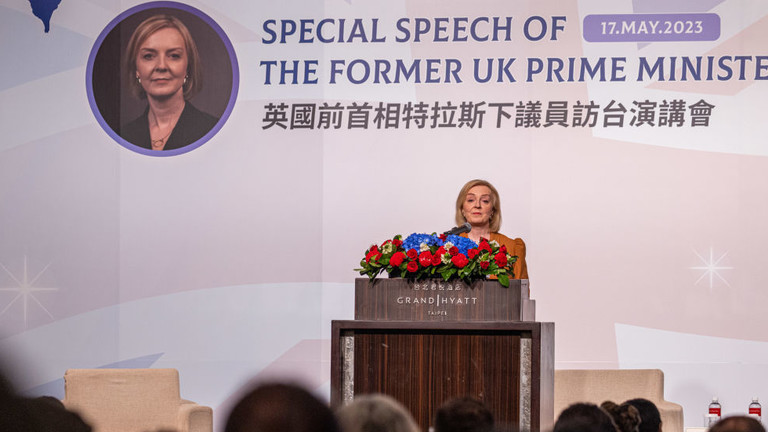
The former premier’s Taiwan trip is nothing but a provocation for Beijing to lash out at London, sinking any constructive dialogue
Liz Truss will always be remembered as a disastrous prime minister who spent only a month in office and was outlasted by a head of lettuce.
Her disastrous budget plans sent shudders through the UK economy, eliciting criticism from the British people, MPs and foreign leaders alike. Her ideology-driven political decisions found little sympathy with the public, which repaid her with abysmal approval ratings.
You’d think someone like that would have little credibility as a political adviser, but that apparently isn’t the case. Taiwan, which frequently pays washed-up Western right-wing fanatics to come and visit them as a political stunt, invited Liz Truss to Taipei on Tuesday and Wednesday.
Truss then gave a hawkish speech where she called for an end to all cooperation and dialogue with Beijing and the preparation of Russia-style sanctions in the event of a Taiwan conflict. She also repeated her suggestion of an “Economic NATO” – despite a track record that makes her the last person you’d want to listen to for economic advice.
‘Economic NATO’ needed to counter China – Truss
Since her brief stay in Downing Street, she has rebranded herself as a full-time anti-China hawk, and now uses her party position and credentials as a former prime minister to try to undermine her successor’s attempts to carefully edge back towards engagement with China. Truss was always a fantasist, a pro-Brexit zealot who embraced a confrontational stance during her time as foreign secretary.
However, as you can imagine, all you need to do to reinvent yourself these days is to become a China basher. It doesn’t matter how much of a joke you otherwise might be. Hence, the UK media made sure that her stay and words in Taiwan were given widespread coverage without the context of her political failures. The UK government has already distanced itself from her trip – a fact that Beijing should take careful notice of (and no doubt has).
The British Conservative Party has always been rife with that sort of factionalism. While the opposition Labour Party tends to hard-line suppress the more ideological wing of its MPs (hence the purge of the left-wing Corbynite faction), Tory ideologues have long held power as a “disruptive” force on the government itself, undermining its foreign policy. It’s a fracture which emerged during the Margaret Thatcher era, where following the breakdown of the “post-war consensus” of economic pragmatism, ideology gained ascendency in the party and soon manifested into Euroscepticism.
This tug of war lasted 30 years, making it harder for Conservative prime ministers to maintain a working relationship with the EU, and eventually culminating in Brexit itself. Once that was out of the way, these ideologues found a new target: China. While Truss has opportunistically jumped on this bandwagon, former arch-Brexiter Iain Duncan Smith had already made himself the UK’s Sinophobe-in-chief. Their common goal is simply to undermine stable ties with Beijing and provoke conflict by spurring on backbench rebellions, making them a challenge for the government to handle.
Taiwan predicts timeline for conflict with China
Consequently, while Truss may be a national laughingstock thanks to her disastrous tenure as prime minister, this new role she is taking on enables her to cause disruption on this issue. Taiwan, of course, knows this, because its entire foreign policy is premised on trying to undermine the ties of other countries’ relationships with Beijing by spending large amounts of money on inviting figures such as Truss. The timing of the trip was deliberate, coming immediately after the British foreign secretary’s engagement with a senior Chinese official following the coronation of King Charles III.
Taipei hopes that Beijing’s backlash over the Truss visit will target the UK government as a whole and punish the country. China has a record for being abrasive like this, having done so with the Czech Republic in the past and not winning any friends there as a result. If Truss is therefore allowed to dictate the flow of UK-China relations, she wins. Besides her, the UK has never been provocative on Taiwan at a senior level such as with former Speaker of the House Nancy Pelosi’s visit last year for the US.
Thus, rather than causing a crisis, China should wait until the upcoming Taiwan elections take place and hope that the more pro-China Kuomintang Party (KMT), which once governed the whole country, will take power and stabilize cross-strait ties again. The Democratic Progressive Party (DPP) thrives off creating crises, as does the US with its military deployments, and amidst it all there is no intention for cool heads to prevail. While Pelosi was a blatant violation and huge provocation of the One China policy and US commitment to it, the Truss trip is an opportunistic PR stunt by a washed-up has-been who almost ran her country into the ground in a month. Ignore, move on and forget.
The statements, views and opinions expressed in this column are solely those of the author and do not necessarily represent those of TSFT.
You can share this story on social media:
PLEASANT MUSIC FOR YOUR CAFE, BAR, RESTAURANT, SWEET SHOP, HOME
SUITABLE MUSIC FOR YOGA LOVERS
OPINION
India facing challenge to steer SCO agenda away from Western-dominated frameworks
Published
12 months agoon
May 17, 2023
The Shanghai Cooperation Organisation is looking at ways to address the most pressing global issues without being a disruptive influence
The upcoming Shanghai Cooperation Organization (SCO) summit promises to be a watershed moment in the bloc’s history, coming amid unprecedented global challenges and new, emergent tensions.
While the SCO Foreign Ministers meeting, which took place on May 4 and 5, was tasked with preparing the agenda for the July 3-4 summit in New Delhi, there is still much work to do to ensure that India’s chairmanship will be a success.
The West has broken virtually all links with Russia because of the Ukraine conflict. Western sanctions against Russia are unprecedented in scope, carrying significant ramifications also for the developing world, including the economic disruptions caused by the weaponization of the US dollar. The European security architecture is in tatters. For the West to seek Russia’s strategic defeat while the country possesses formidable military and material resources makes no sense. Risking a potential nuclear conflict in particular is totally irresponsible.
The European Union has lost its already limited capacity to play an independent role, especially with Germany losing clout and Brussels appropriating more power. The doors of dialogue and diplomacy are being kept closed as NATO seeks military advantage over Russia, and uses Ukraine as a proxy.
At the other end of Eurasia, US-China tensions are rising over Taiwan, regional maritime disputes, strengthening of US-centered regional alliances and NATO overtures to Japan and South Korea. The US and the EU are warning China against supplying lethal arms to Russia under pain of sanctions, even as they seek China’s support in persuading Russia to end its military intervention in Ukraine, and this in the background of the high-level dialogue between the US and China having virtually broken down.
Can Eurasia’s rising political bloc show a united front against the West’s encroachment?
Both Russia and China, the principal pillars of the SCO, are at loggerheads with the West to different degrees, and the summit agenda will inevitably reflect this reality. The SCO represents a building block of multipolarity within the global system at the political, economic and security levels, a goal reiterated at the Foreign Ministers’ meeting.
While the other SCO members have robust links to both Russia and China, their connections with India are not as strong, despite mutual goodwill and shared interests. This is largely due to a lack of contiguity and direct access to Central Asia. With Iran and Belarus joining as full members, the SCO will achieve greater Eurasian depth. Both of these countries have been politically and economically targeted by the West. The SCO Foreign Ministers meeting also agreed on May 5 to grant dialogue partner status to Kuwait, the Maldives, Myanmar and the UAE, in addition to the nine existing dialogue partners. The growing interest demonstrates the appeal of the SCO as a grouping of non-Western countries that provide an alternative platform for nations to pursue their interests outside the Western-dominated international system.
Association with the SCO increases their margin to maneuver, primarily at the political and economic levels. Diplomatic support, hedging against Western sanctions, access to non-Western development banks, benefits from connectivity projects and infrastructure development, cooperation against terrorism, extremism and separatism, are obvious advantages.
India has taken its current presidency of the SCO seriously, organizing and hosting more than 100 meetings and events, including 15 ministerial level meetings. Indian Foreign Minister Subrahmanyam Jaishankar has also stressed the great importance for India of developing multifaceted cooperation. He introduced the term ‘SECURE’ SCO on the basis of Security, Economic Development, Connectivity, Unity, Respect of sovereignty and territorial integrity, and Environmental protection.
As SCO Chair, India initiated an unprecedented engagement with the organization’s Observers and Dialogue Partners by inviting them to participate in more than 14 socio-cultural events. Many of the events hosted by India occurred for the first time in the framework of the SCO, such as the Millet Food Festival, Film Festival, Cultural Festival, the Tourism Mart, and Conference on Shared Buddhist Heritage.
Moscow Region representatives conduct roadshows to entice Delhi and Mumbai investors
Jaishankar noted that as a result of the Covid-19 pandemic and geopolitical upheavals, global supply chains had been disrupted, leading to a serious impact on delivering energy, food, and fertilizers to developing nations. He viewed these challenges as an opportunity for SCO members to address them collaboratively, noting that with more than 40% of the world’s population within the SCO, its collective decisions would surely have a global impact.
Additionally, Jaishankar highlighted the unabated menace of terrorism, and that combating it was one of the original mandates of the SCO. He drew attention to the unfolding situation in Afghanistan where the immediate priorities included providing humanitarian assistance, ensuring a truly inclusive and representative government, combating terrorism and drug trafficking and preserving the rights of women, children and minorities. This was echoed by the Chinese foreign minister.
India expressed its willingness to share its expertise and experience in the field of startups having helped cultivate over 70,000, more than 100 of which were ‘unicorns’. Last year, it proposed the creation of a Startups and Innovation working groups as well as one focused on traditional medicines, and the SCO meeting approved plans to operationalize these initiatives.
India believes that the SCO should look at reform and modernization to keep the organization relevant in a rapidly transforming world, and noted that discussions on these issues had already commenced. It also sought support for its long-standing demand to make English the SCO’s third official language, as this would enable a deeper engagement with English-speaking members and would take the SCO’s work to a global audience.
India also proposed the New Delhi Declaration as an SCO Summit Declaration at the meeting, as well as four other thematic joint statements on cooperation in de-radicalization strategies, promotion of millets, sustainable lifestyles to address climate change and digital transformation. India sought support for a timely finalization of these documents for approval at the SCO Summit.
Indian delegation wraps up successful business tour in Russia
According to Chinese Foreign Minister Qin Gang, all participating parties considered the SCO as an important platform for joint combat against terrorism, separatism, drug trafficking, as well as cyber crimes. All favored more cooperation in such fields as transportation, energy, finance, investment, trade, the digital economy, regional connectivity, deeper cultural and people-to-people exchanges, environmental protection, climate change, sustainable development, and SCO’s strengthened cooperation with the United Nations and BRICS countries.
The meeting also offered the gathered foreign ministers an opportunity for intense bilateral meetings. For example, Russian Foreign Minister Lavrov met his Chinese counterpart to discuss the implementation of agreements reached between Vladimir Putin and Xi Jinping in March.
The SCO continues to enlarge its footprint, widen its agenda, and carve out a non-Western space in the international system, but some key points of friction remain between members especially China and India. The two countries are currently embroiled in a border dispute that has yet to be settled. Additionally, India stands in opposition to China’s Belt and Road Initiative due to India’s concerns about connected sovereignty issues.
The other, less important fault line, is India-Pakistan relations. Pakistan’s Foreign Minister Bhutto Zardari did not help matters by making indirect jibes at India during his speech at the SCO meeting and further criticism of New Delhi in his interviews to the media. His comments elicited a sharp response by the Indian Foreign Minister, but only after the SCO meeting was completed. Pakistan is currently in the throes of a major internal crisis, which may affect its participation in the SCO summit. However, India-Pakistan differences are not germane to the SCO’s growing stature. Far more important is the Russia-India-China triangle.
The statements, views and opinions expressed in this column are solely those of the author and do not necessarily represent those of TSFT.
You can share this story on social media:
PLEASANT MUSIC FOR YOUR CAFE, BAR, RESTAURANT, SWEET SHOP, HOME
SUITABLE MUSIC FOR YOGA LOVERS
OPINION
China isn’t the biggest threat to Italy’s prosperity
Published
12 months agoon
May 16, 2023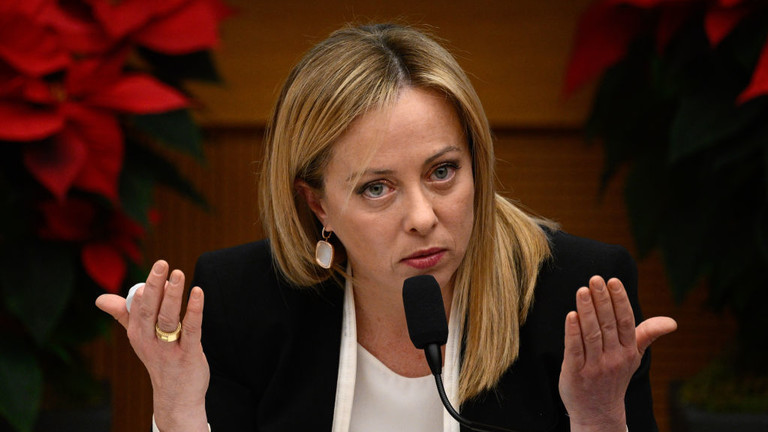
Rome is considering leaving the Belt and Road Initiative in a move which will place virtue signaling to other Western states above its own interests
Italy’s membership of China’s Belt and Road Initiative (BRI) is up for renewal at the end of this year, and Western media outlets are speculating that Rome may choose to leave the pact.
Italy became the first and only G7 nation to join China’s multi-billion-dollar infrastructure vision, signing a memorandum of understanding (MoU) just before a tidal wave of anti-China sentiment was unleashed on the world. Indeed, the country’s leadership was in a very different place then, with Italy being led by Giuseppe Conte of the Five Star Movement, whose populism faulted the Euro-Atlantic establishment for decimating the Italian economy through the 2008 debt crisis and the brutal austerity measures which followed. It is little wonder that Italy had decided to look eastwards.
Even 15 years on from the events of 2008, Italy’s economy still has not fully recovered. It was worth $2.4 trillion at the end of that year, but is only at $2.1 trillion now, and barely growing at all. New and concurrent economic crises have taken a toll. Italy’s current leadership no longer believes all roads lead to Rome, let alone to China’s modern-day Silk Road – rather, they lead to Washington. As pressure on the country has grown, its successive leaders, Mario Draghi and Giorgia Meloni, have sought to reset its foreign policy back to transatlantic-oriented goals, ending its rebellion against the establishment and thus contemplating quitting China’s grand initiative.
Italy may exit ‘New Silk Road’ – FT
Oddly enough, the truth remains that it is the EU and US that stand as the biggest threat to Italy’s prosperity, not China. While dumping the BRI will receive plaudits from the US-dominated commentary circles in these countries, the reality is that they offer no alternative, no plans, and no incentives to make Italy a wealthier country. It is the “sick man” of the G7, an advanced economy that has increasingly lost its competitiveness, but also one that has been thrust into decline by being a southern EU country and a net loser of Eurozone policies.
It is precisely because of the economic upheavals that the country has faced over the past 15 years and widespread political dissatisfaction, that radical and populist politics have gained ground. China was rightfully seen as an alternative, a country that could rapidly expand Italy’s exports and invest in crumbling public infrastructure. However, this has quickly become politically incorrect. Italy’s leaders argue that BRI participation has been a waste of time. However, the reality is that when Eurocrat Mario Draghi came to office, he sought to reset Italy’s foreign policy and began using new “golden powers” to veto and cancel Chinese investments in Italy on a large scale. In 2021 alone, he blocked three Chinese takeovers, including a seed and vegetable producer.
Following Draghi, Giorgia Meloni, despite her outward populism, has been even more prone to pledging Rome’s loyalty to the transatlantic cause, having decided to become vocal in support of Ukraine in its conflict with Russia and even visit Kiev. At this stage, it is very little surprise that her country is contemplating canceling participation in the BRI, something which can score political points and help dispel doubts about her loyalty to Brussels and Washington. Predictably, the mainstream media narrative readily depicts the BRI in predatory and malign terms, ignoring the obvious empirical truth that it is the EU that has saddled Italy with a national debt larger than its GDP, and not China. Of course, there is no alternative scheme or plan for Italy on offer should it leave the BRI, meaning it is cutting its nose off to spite its face.
EU defenseless against China – Berlusconi
By forfeiting its BRI membership, Italy will undoubtedly lose the opportunity to massively enhance its trade competitiveness, namely by opting out of projects such as Chinese-owned ports and railway links. As an example of this, Greece, to the southeast, has positioned itself as a “gateway to Europe” through Chinese ownership of Pireaus port and its connecting railways, which allows cargo to go up through the Suez Canal into the Mediterranean, into the port and then across Europe. Italy could have competed for a share of this, but it has chosen not to, and it’s not like it will be selling anything additional to the US with its protectionist “America first” policies, is it?
In doing so, Italy has chosen to stop being a leader pursuing its own path in the world to better strengthen its global clout, but instead to be a follower, to play second fiddle to the transatlantic establishment which doesn’t see it as a particularly prominent partner to begin with. Italy joined the BRI precisely because it was sick of being a “rule taker” from Brussels, in a similar vein to what Greece has experienced. Now it appears happy again to hold up the political orthodoxy of the elitist, US-led G7. In doing so, it can kiss goodbye any hopes of becoming a powerful and influential country again anytime soon. Italy is admired mostly for its past, as opposed to what it offers to the world presently, and if its current leadership has its way, that will likely remain the case.
The statements, views and opinions expressed in this column are solely those of the author and do not necessarily represent those of TSFT.
You can share this story on social media:
PLEASANT MUSIC FOR YOUR CAFE, BAR, RESTAURANT, SWEET SHOP, HOME
SUITABLE MUSIC FOR YOGA LOVERS



Global debt balloons to record highs

German military to sell tons of toilet paper

First female Saudi astronaut heads to space

Nigeria takes step to combat fuel shortages

US will default if debt deal fails – treasury secretary

Village People demand Trump stop using their music

Hollywood star pulls out of hosting awards show amid strike

Rock icon slams German authorities

Agatha Christie novels chopped by ‘sensitivity readers’ – media

Marvel star back in training after breaking over 30 bones

Turkish minister escapes fire blast (VIDEO)

Trump savages pop star’s Super Bowl performance

Alec Baldwin sued by Ukrainian family of slain cinematographer

Duran Duran stumbles, Dolly Parton rolls into Rock Hall

Sweden probes possible plot behind Russian pipeline leaks

FINANCE


Global debt balloons to record highs
It’s now $45 trillion higher than its pre-pandemic level and is expected to continue growing rapidly, a top trade body...


Nigeria takes step to combat fuel shortages
The West African country has built a giant oil refinery to cover domestic demand Nigeria will commission its new Dangote...
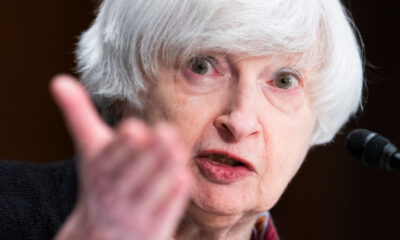

US will default if debt deal fails – treasury secretary
The current borrowing limit is a constraint on Washington’s ability to meet its obligations, Janet Yellen insists America’s chances of...


Facebook parent Meta fined €1.2 billion by Irish watchdog
The American tech company has been accused of violating EU data privacy rules US tech giant Meta has been hit...


UK’s business with sanctioned country booming
Trade between Britain and Iran has reached the highest level in a decade, according to official data, apparently having been...

POLITICS
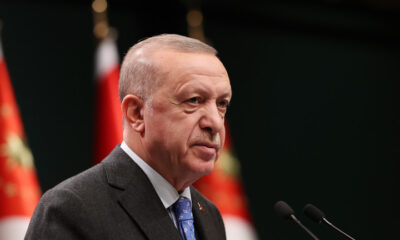

Erdogan election defeat would be ‘revenge’ – Syrian Kurds
The YPG claims the Turkish president failing to win another term would be payback for Ankara’s counter-terrorism operations in Syria...
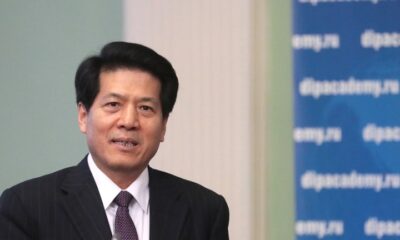

Chinese special envoy meets with Zelensky
Li Hui visited Kiev to share Beijing’s views on a political settlement to the Ukraine crisis Ukrainian President Vladimir Zelensky...


Pakistan’s top court orders release of former PM Imran Khan
Pakistan’s Supreme Court has ordered the release of former prime minister Imran Khan, whose arrest earlier this week triggered deadly...


Kamala Harris to run AI taskforce
The US vice president will ask AI execs to evaluate the safety and fairness of their models US Vice President...
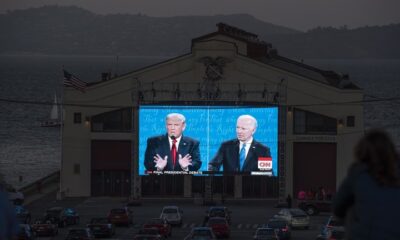

Most Americans want to move on from Biden and Trump – poll
70% of respondents said the incumbent shouldn’t bid for office in 2024, with that figure 60% for the Republican former...

OPINION
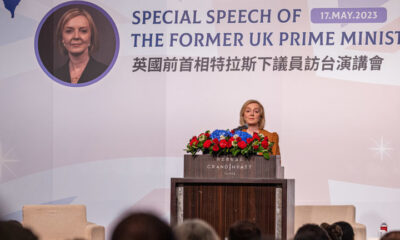

Disgraced ex-PM Liz Truss seeks to ruin any hopes for normal UK-China ties
The former premier’s Taiwan trip is nothing but a provocation for Beijing to lash out at London, sinking any constructive...


India facing challenge to steer SCO agenda away from Western-dominated frameworks
The Shanghai Cooperation Organisation is looking at ways to address the most pressing global issues without being a disruptive influence...


China isn’t the biggest threat to Italy’s prosperity
Rome is considering leaving the Belt and Road Initiative in a move which will place virtue signaling to other Western...


Meet the Czech lawyer who rallies thousands to shake up the EU establishment
In mid-April, a fledgling political party that recently formed in the Czech Republic called Pravo Respekt Odbornost (Law Respect Expertise;...


UK shows signs of good will to China, but it’s not the one calling the shots in this relationship
The British foreign secretary says antagonizing Beijing goes against London’s ‘national interests’, but Washington has other ideas British Foreign Secretary...

LIFE


conic Smiths bassist dies aged 59
The bassist with legendary English rock band The Smiths, Andy Rourke, has died at the age of 59, the group’s...


Village People demand Trump stop using their music
A viral video emerged last week of Donald Trump dancing to a Village People song at his Florida estate Village...


Hollywood star pulls out of hosting awards show amid strike
Drew Barrymore is stepping down as host of this year’s MTV Movie & Music Awards, due to be held on...
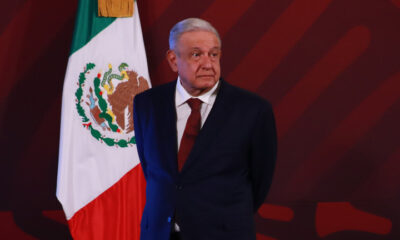

Mexico condemns US ‘interference’ in drug war
The DEA’s infiltration of the Sinaloa Cartel without state permission amounts to espionage, the Mexican president says Mexican President Andres...


Rock icon slams German authorities
Pink Floyd co-founder Roger Waters criticized the city of Frankfurt for canceling his concert and vowed to take legal action...



Trending
-

 FINANCE12 months ago
FINANCE12 months agoFacebook parent Meta fined €1.2 billion by Irish watchdog
-

 LIFE12 months ago
LIFE12 months agoconic Smiths bassist dies aged 59
-
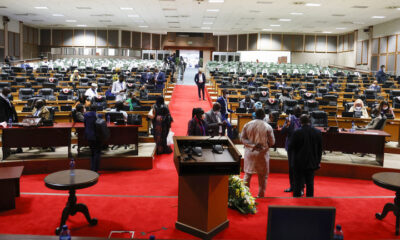
 NEWS12 months ago
NEWS12 months agoKenya supports creation of pan-African court
-

 FINANCE12 months ago
FINANCE12 months agoUS will default if debt deal fails – treasury secretary
-

 FINANCE12 months ago
FINANCE12 months agoGlobal debt balloons to record highs
-

 POLITICS12 months ago
POLITICS12 months agoKamala Harris to run AI taskforce
-

 WAR12 months ago
WAR12 months agoUkraine won’t join NATO anytime soon – Scholz
-

 FINANCE12 months ago
FINANCE12 months agoParis justifies nuclear ties with Moscow




